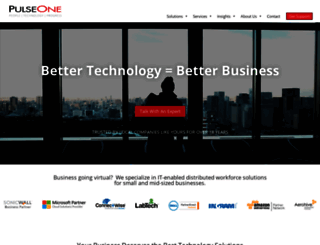PulseOne - Managed IT services for small & medium businesses
Page Load Speed
4.2 sec in total
First Response
96 ms
Resources Loaded
3.4 sec
Page Rendered
687 ms

About Website
Visit pulseone.com now to see the best up-to-date Pulse One content and also check out these interesting facts you probably never knew about pulseone.com
Managed IT services for small & medium businesses, including professional on-site support, customizable managed services, cloud & security solutions.
Visit pulseone.comKey Findings
We analyzed Pulseone.com page load time and found that the first response time was 96 ms and then it took 4.1 sec to load all DOM resources and completely render a web page. This is a poor result, as 65% of websites can load faster.